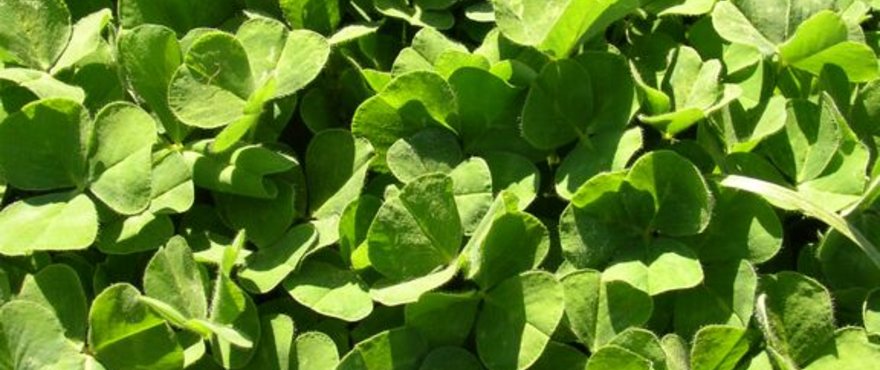Download a copy of the Denmark sub-clover factsheet.
Denmark is a black seeded sub-clover that belongs to the (Trifolium subterraneum ssp. subterraneum family). It was derived from material collected at Sardinia and released as part of the National Subterraneum Clover Improvement Program. Denmark demonstrates a prostrate growth habit and persists well on moderate to heavy soil types. It has late season maturity which makes Denmark well suited to medium to high rainfall zones. Denmark is an alternative replacement for Karridale and Mount Barker, selected for its superior autumn and winter growth rates along with improved disease resistance. It is best suited to regions with a 7–8 month growing period. The levels of hard seed that Denmark can supply will vary depending on seasonal conditions but would be suitable for either permanent pasture or short to medium term crop rotations. Denmark will also provide the benefits of soil nitrogen as well as providing an effective disease break.
Key features
- Late season maturity – 144 days to flowering (Perth)
- Replacement for Karridale and Mount Barker
- Greater full season dry matter production
- Moderate levels of hard seed (10–29%)
- One of the only subs that can continue to grow after flowering
- Resistant to clover scorch and root rot • Particularly well suited to grazing
Key benefits
- Denmark’s disease resistance and hard seed profile ensures improved productivity and persistence compared to many late season sub-clovers, particularly Karridale and Mount Barker.
- When Denmark is mixed with other varieties such as Monti and Napier in high rainfall situations, the resulting sward will have increased production and persistence.
Suggested sowing rate
Mix: 6–10 kg/ha
Pest Resistance
Denmark is susceptible to red legged earth mites (Halotydeus destructor), blue-green aphids (Acyrthosiphon kondoi), blue oat mites (Penthaleus major) and spotted clover aphids (Therioaphis trifolii). Control is essential at the early seedling stage and appropriate pest management must be implemented as required.
Disease Resistance/Tolerance
Denmark is resistant to clover scorch (Kabatiella caulivora) and has demonstrated high resistance to strains 0 and 2 of phytophthora root rot (Phytophthora clandestina). Denmark has demonstrated moderate tolerance to root rots caused by pythium (Pythium spp.) and fusarium (Fusarium spp.) along with moderate resistance to leaf diseases caused by leaf rust (Uromyces trifolii-repentis) and cercospora leafspot (Cercosprora zebrifsne).
Denmark demonstrates superior disease tolerance compared to other sub-clover varieties of similar maturity.
Agronomy and management
Regeneration
Denmark has demonstrated superior seed productivity compared to Mount Barker and Karridale. It is a relatively soft seeded sub-clover (<10% hard seed) which is similar to Mount Barker and Karridale. However, if grown in cooler conditions, hard seed levels of Denmark can increase to around 29% compared to Karridale (24%) and Mount Barker (9%). This characteristic, along with improved seed yields, proves Denmark to be a more effective long term grazing option in cooler growing regions.
Grazing
Denmark is particularly well suited to grazing and care must be taken with newly sown pastures, so as not to overgraze too early as plants can be pulled from the ground. Light grazing during the establishment period will help control weeds and encourage dense prostrate growth. Once established, heavy grazing of Denmark up to flowering will improve seed set. When flowering begins, stocking rates should be reduced to optimise seed set.
Disclaimer: The information presented in this brochure is from official and other sources and is considered to be reliable. It is provided in good faith and every care has been taken to ensure its accuracy. Barenbrug does not accept any responsibility for the consequences that may arise from the acceptance of recommendations or the suggestions made.


